Navid Ayoobi
ESPERANTO: Evaluating Synthesized Phrases to Enhance Robustness in AI Detection for Text Origination
Sep 22, 2024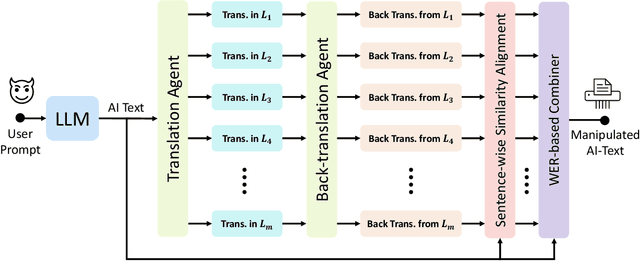
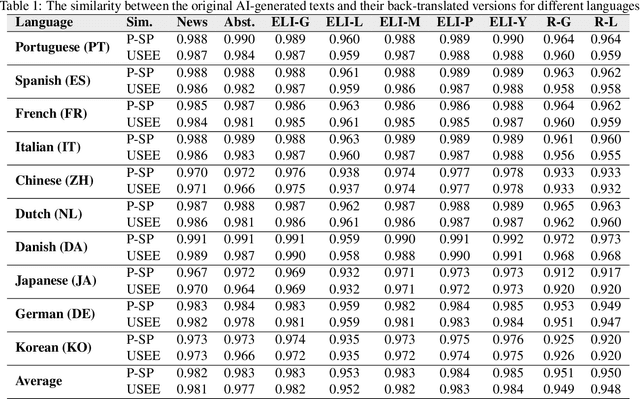

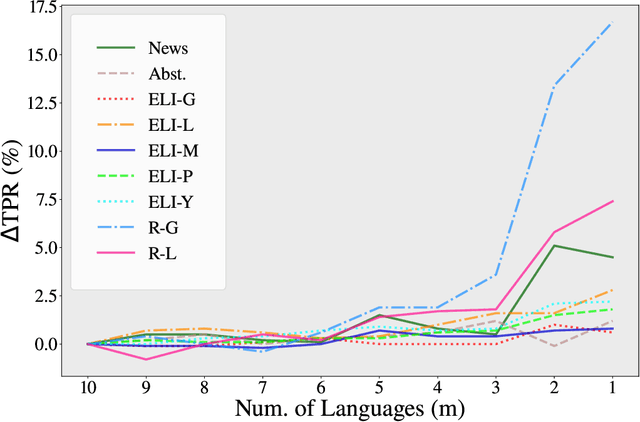
Abstract:While large language models (LLMs) exhibit significant utility across various domains, they simultaneously are susceptible to exploitation for unethical purposes, including academic misconduct and dissemination of misinformation. Consequently, AI-generated text detection systems have emerged as a countermeasure. However, these detection mechanisms demonstrate vulnerability to evasion techniques and lack robustness against textual manipulations. This paper introduces back-translation as a novel technique for evading detection, underscoring the need to enhance the robustness of current detection systems. The proposed method involves translating AI-generated text through multiple languages before back-translating to English. We present a model that combines these back-translated texts to produce a manipulated version of the original AI-generated text. Our findings demonstrate that the manipulated text retains the original semantics while significantly reducing the true positive rate (TPR) of existing detection methods. We evaluate this technique on nine AI detectors, including six open-source and three proprietary systems, revealing their susceptibility to back-translation manipulation. In response to the identified shortcomings of existing AI text detectors, we present a countermeasure to improve the robustness against this form of manipulation. Our results indicate that the TPR of the proposed method declines by only 1.85% after back-translation manipulation. Furthermore, we build a large dataset of 720k texts using eight different LLMs. Our dataset contains both human-authored and LLM-generated texts in various domains and writing styles to assess the performance of our method and existing detectors. This dataset is publicly shared for the benefit of the research community.
Seeing Through AI's Lens: Enhancing Human Skepticism Towards LLM-Generated Fake News
Jun 20, 2024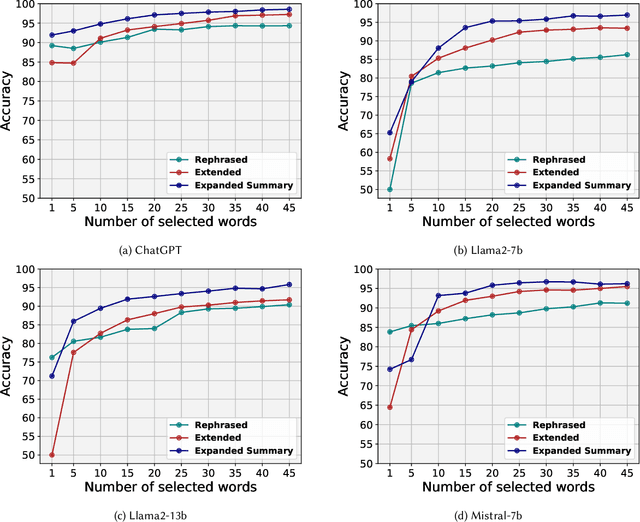
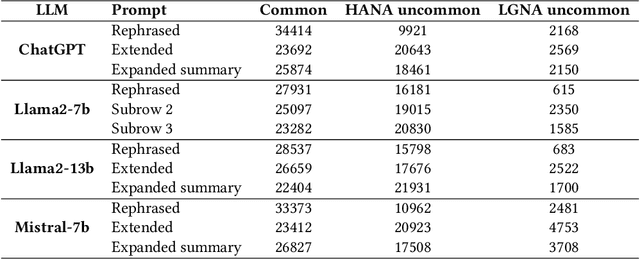


Abstract:LLMs offer valuable capabilities, yet they can be utilized by malicious users to disseminate deceptive information and generate fake news. The growing prevalence of LLMs poses difficulties in crafting detection approaches that remain effective across various text domains. Additionally, the absence of precautionary measures for AI-generated news on online social platforms is concerning. Therefore, there is an urgent need to improve people's ability to differentiate between news articles written by humans and those produced by LLMs. By providing cues in human-written and LLM-generated news, we can help individuals increase their skepticism towards fake LLM-generated news. This paper aims to elucidate simple markers that help individuals distinguish between articles penned by humans and those created by LLMs. To achieve this, we initially collected a dataset comprising 39k news articles authored by humans or generated by four distinct LLMs with varying degrees of fake. We then devise a metric named Entropy-Shift Authorship Signature (ESAS) based on the information theory and entropy principles. The proposed ESAS ranks terms or entities, like POS tagging, within news articles based on their relevance in discerning article authorship. We demonstrate the effectiveness of our metric by showing the high accuracy attained by a basic method, i.e., TF-IDF combined with logistic regression classifier, using a small set of terms with the highest ESAS score. Consequently, we introduce and scrutinize these top ESAS-ranked terms to aid individuals in strengthening their skepticism towards LLM-generated fake news.
CNN Autoencoder Resizer: A Power-Efficient LoS/NLoS Detector in MIMO-enabled UAV Networks
May 26, 2024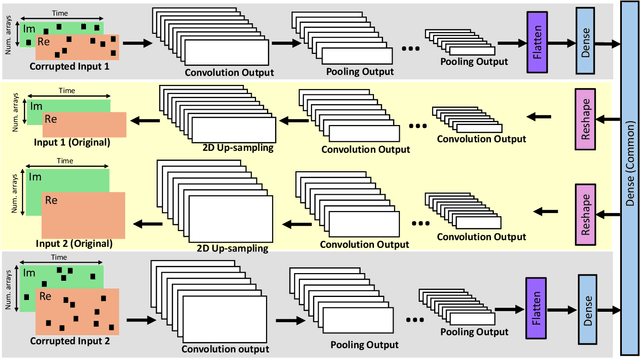

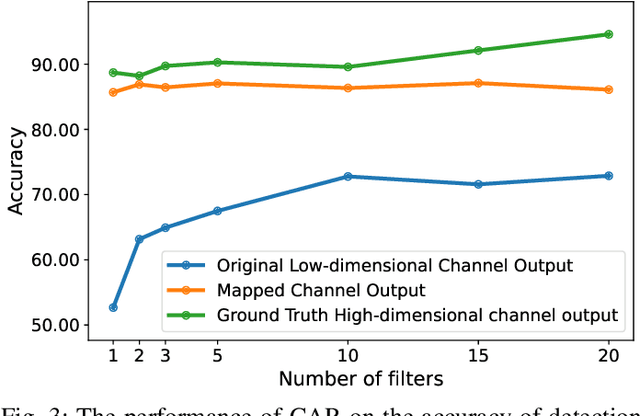
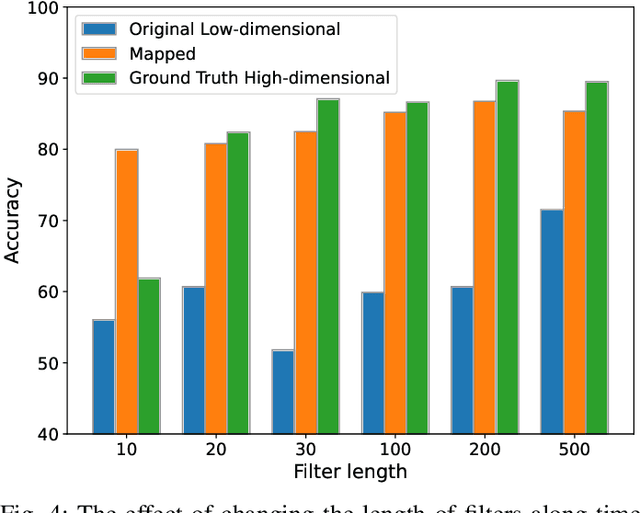
Abstract:Optimizing the design, performance, and resource efficiency of wireless networks (WNs) necessitates the ability to discern Line of Sight (LoS) and Non-Line of Sight (NLoS) scenarios across diverse applications and environments. Unmanned Aerial Vehicles (UAVs) exhibit significant potential in this regard due to their rapid mobility, aerial capabilities, and payload characteristics. Particularly, UAVs can serve as vital non-terrestrial base stations (NTBS) in the event of terrestrial base station (TBS) failures or downtime. In this paper, we propose CNN autoencoder resizer (CAR) as a framework that improves the accuracy of LoS/NLoS detection without demanding extra power consumption. Our proposed method increases the mean accuracy of detecting LoS/NLoS signals from 66% to 86%, while maintaining consistent power consumption levels. In addition, the resolution provided by CAR shows that it can be employed as a preprocessing tool in other methods to enhance the quality of signals.
Federated Learning: A Cutting-Edge Survey of the Latest Advancements and Applications
Oct 15, 2023Abstract:In the realm of machine learning (ML) systems featuring client-host connections, the enhancement of privacy security can be effectively achieved through federated learning (FL) as a secure distributed ML methodology. FL effectively integrates cloud infrastructure to transfer ML models onto edge servers using blockchain technology. Through this mechanism, it guarantees the streamlined processing and data storage requirements of both centralized and decentralized systems, with an emphasis on scalability, privacy considerations, and cost-effective communication. In current FL implementations, data owners locally train their models, and subsequently upload the outcomes in the form of weights, gradients, and parameters to the cloud for overall model aggregation. This innovation obviates the necessity of engaging Internet of Things (IoT) clients and participants to communicate raw and potentially confidential data directly with a cloud center. This not only reduces the costs associated with communication networks but also enhances the protection of private data. This survey conducts an analysis and comparison of recent FL applications, aiming to assess their efficiency, accuracy, and privacy protection. However, in light of the complex and evolving nature of FL, it becomes evident that additional research is imperative to address lingering knowledge gaps and effectively confront the forthcoming challenges in this field. In this study, we categorize recent literature into the following clusters: privacy protection, resource allocation, case study analysis, and applications. Furthermore, at the end of each section, we tabulate the open areas and future directions presented in the referenced literature, affording researchers and scholars an insightful view of the evolution of the field.
The Looming Threat of Fake and LLM-generated LinkedIn Profiles: Challenges and Opportunities for Detection and Prevention
Jul 21, 2023



Abstract:In this paper, we present a novel method for detecting fake and Large Language Model (LLM)-generated profiles in the LinkedIn Online Social Network immediately upon registration and before establishing connections. Early fake profile identification is crucial to maintaining the platform's integrity since it prevents imposters from acquiring the private and sensitive information of legitimate users and from gaining an opportunity to increase their credibility for future phishing and scamming activities. This work uses textual information provided in LinkedIn profiles and introduces the Section and Subsection Tag Embedding (SSTE) method to enhance the discriminative characteristics of these data for distinguishing between legitimate profiles and those created by imposters manually or by using an LLM. Additionally, the dearth of a large publicly available LinkedIn dataset motivated us to collect 3600 LinkedIn profiles for our research. We will release our dataset publicly for research purposes. This is, to the best of our knowledge, the first large publicly available LinkedIn dataset for fake LinkedIn account detection. Within our paradigm, we assess static and contextualized word embeddings, including GloVe, Flair, BERT, and RoBERTa. We show that the suggested method can distinguish between legitimate and fake profiles with an accuracy of about 95% across all word embeddings. In addition, we show that SSTE has a promising accuracy for identifying LLM-generated profiles, despite the fact that no LLM-generated profiles were employed during the training phase, and can achieve an accuracy of approximately 90% when only 20 LLM-generated profiles are added to the training set. It is a significant finding since the proliferation of several LLMs in the near future makes it extremely challenging to design a single system that can identify profiles created with various LLMs.
Unsupervised Motor Imagery Saliency Detection Based on Self-Attention Mechanism
Apr 19, 2022
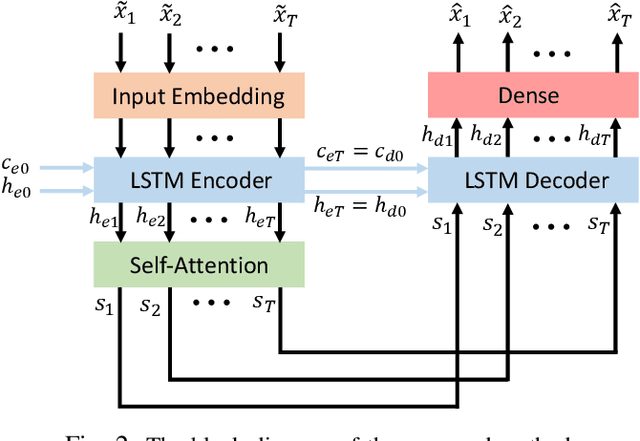
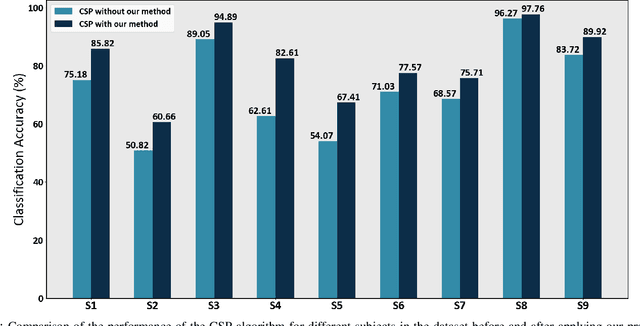
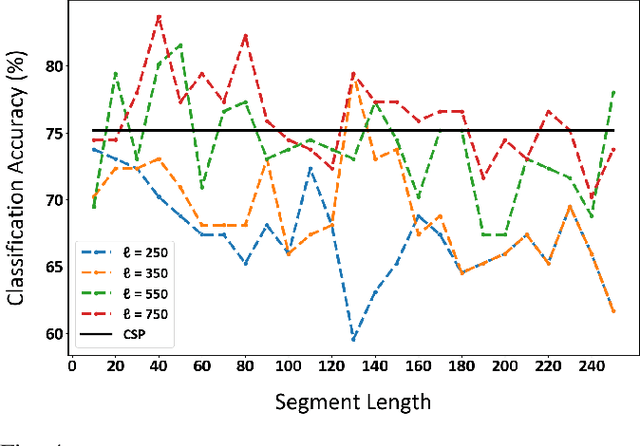
Abstract:Detecting the salient parts of motor-imagery electroencephalogram (MI-EEG) signals can enhance the performance of the brain-computer interface (BCI) system and reduce the computational burden required for processing lengthy MI-EEG signals. In this paper, we propose an unsupervised method based on the self-attention mechanism to detect the salient intervals of MI-EEG signals automatically. Our suggested method can be used as a preprocessing step within any BCI algorithm to enhance its performance. The effectiveness of the suggested method is evaluated on the most widely used BCI algorithm, the common spatial pattern (CSP) algorithm, using dataset 2a from BCI competition IV. The results indicate that the proposed method can effectively prune MI-EEG signals and significantly enhance the performance of the CSP algorithm in terms of classification accuracy.
A Subject-Independent Brain-Computer Interface Framework Based on Supervised Autoencoder
Apr 19, 2022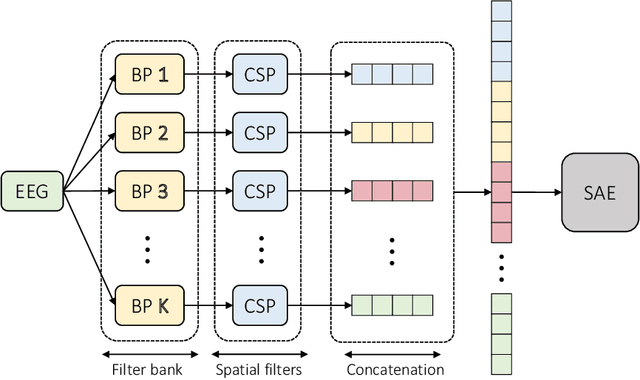
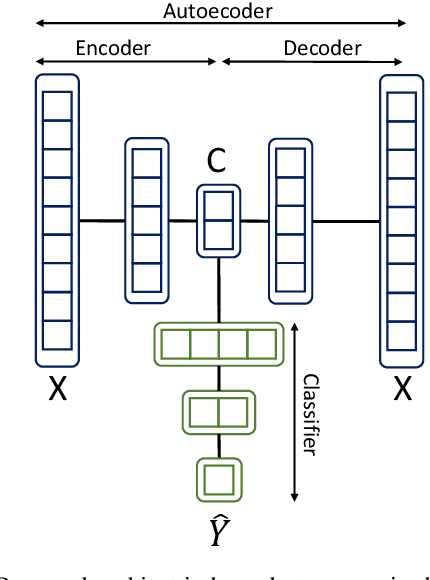
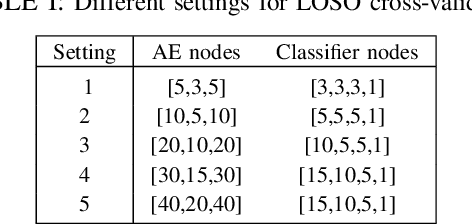
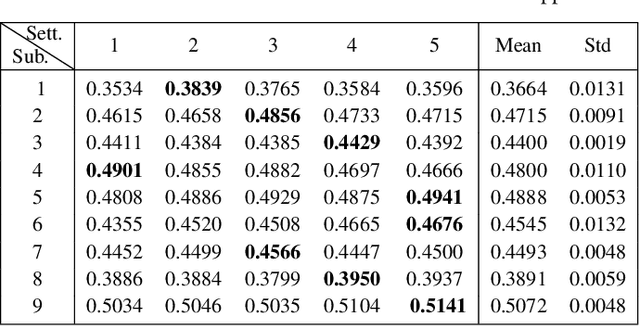
Abstract:A calibration procedure is required in motor imagery-based brain-computer interface (MI-BCI) to tune the system for new users. This procedure is time-consuming and prevents na\"ive users from using the system immediately. Developing a subject-independent MI-BCI system to reduce the calibration phase is still challenging due to the subject-dependent characteristics of the MI signals. Many algorithms based on machine learning and deep learning have been developed to extract high-level features from the MI signals to improve the subject-to-subject generalization of a BCI system. However, these methods are based on supervised learning and extract features useful for discriminating various MI signals. Hence, these approaches cannot find the common underlying patterns in the MI signals and their generalization level is limited. This paper proposes a subject-independent MI-BCI based on a supervised autoencoder (SAE) to circumvent the calibration phase. The suggested framework is validated on dataset 2a from BCI competition IV. The simulation results show that our SISAE model outperforms the conventional and widely used BCI algorithms, common spatial and filter bank common spatial patterns, in terms of the mean Kappa value, in eight out of nine subjects.
A self-paced BCI system with low latency for motor imagery onset detection based on time series prediction paradigm
Apr 12, 2022


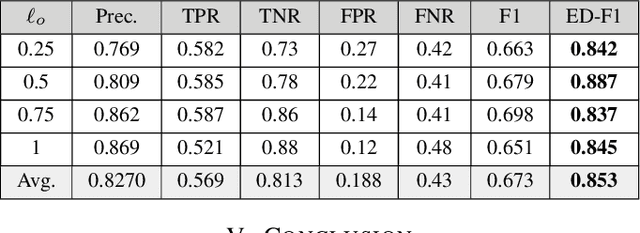
Abstract:In a self-paced motor-imagery brain-computer interface (MI-BCI), the onsets of the MI commands presented in a continuous electroencephalogram (EEG) signal are unknown. To detect these onsets, most self-paced approaches apply a window function on the continuous EEG signal and split it into long segments for further analysis. As a result, the system has a high latency. To reduce the system latency, we propose an algorithm based on the time series prediction concept and use the data of the previously received time samples to predict the upcoming time samples. Our predictor is an encoder-decoder (ED) network built with long short-term memory (LSTM) units. The onsets of the MI commands are detected shortly by comparing the incoming signal with the predicted signal. The proposed method is validated on dataset IVc from BCI competition III. The simulation results show that the proposed algorithm improves the average F1-score achieved by the winner of the competition by 26.7% for latencies shorter than one second.
 Add to Chrome
Add to Chrome Add to Firefox
Add to Firefox Add to Edge
Add to Edge